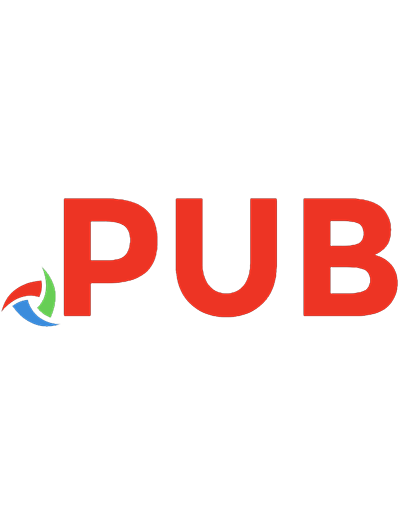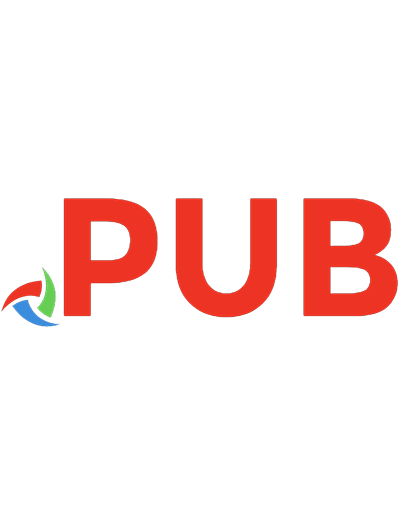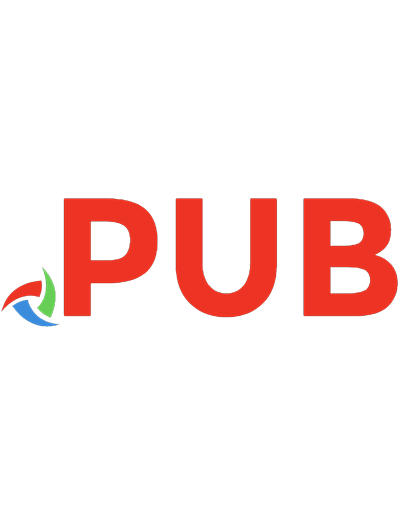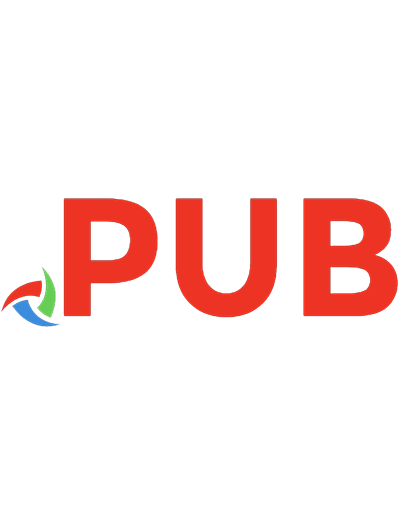Writing the Natural Way: Using Right-Brain Techniques to Release Your Expressive Powers [Rev. ed.] 0874779618
Writing the Natural Way, first published in 1983, has shown hundreds of thousands of readers how to turn the task of wri
555 107 19MB
English Pages 263 [278] Year 2000
Polecaj historie
Table of contents :
Title
Acknowledgments
Contents
Foreword
Preface
1. Opening: Letting the Writer in Us Out
2. Clustering: The Doorway to Your Desing Mind
3. The Receptive “I”: The Childhood Origins of Natural Writing
4. The Self-Reflective Mind: Words and the Brain
5. Discovering Design: The Trial-Web Shift
6. The Zen of Improvising: Re-Creations
7. Recurrences: The Unifying Thread
8. Language Rhythms: The Music in Words
9. Images: Inner Eye Directing Writing Hand
10. Wedding Word to Image: Metaphor
11. Nuances: The Many Voices in the One
12. Yin Yang: Polarity and Creative Tension
13. Brevity and Re-Vision: Less Is More
14. Designing Constellations: Worlds Within Words
Bibliography
Index
About the Author
Citation preview
Western Literature: Themes and Writers (with G. Robert Carlsen) Living Literature: Beginnings (with Hans P. Guth) Discovering Fiction (with Hans P. Guth) Discovering Literature: Stories, Poems, Plays (with Hans P. Guth) Discovering Poetry (with Hans P. Guth) Balancing the Hemispheres: Brain Research and the Teaching of Writing (with Mary Frances Claggett) Pain and Possibility: Writing Your Way Through Personal Crisis Designing Essays (with Kate Evans and Janelle Melvin) To Write Is to Know (audiotape) Garantiert Schreiben Lernen Von der Seele Schreiben
WRITING THE NATURAL WAY Using Right-Brain Techniques to Release Your Expressive Powers
Jeremy P. Tan:her/Putnam a member of Penguin Putnam Inc.
New York
When I knew whose work it was, I made every attempt to locate those students and workshop participants whose writing is reproduced in this book. When I did not, I used "Student."
Most Tarcher/Putnam books are available at special quantity discounts for bulk purchase for sales promotions, premiums, fund-raising, and educational needs. Special books or book excerpts also can be created to fit specific needs. For details, write Putnam Special Markets, 375 Hudson Street, New York, NY 10014. Jeremy P. Tarcher/Putnam a member of Penguin Putnam Inc. 375 Hudson Street New York, NY 10014 www.penguinputnamcom Copyright © 2000 by Gabriele Rico All rights reserved. This book, or parts thereof, may not be reproduced in any form without permission. Published simultaneously in Canada Library of Congress Cataloging-in-Publication Data Rico, Gabriele L. Writing the natural way: using right-brain techniques to release your expressive powers / Gabriele Rico.-Rev. ed. p. cm. Includes bibliographical references and index. ISBN 0-87477-961-8 1. English language---Rhetoric. 2. Left and right (Psychology). 3. Creative writing. 4. Expression. I. Title. 2000 PE1408.R566 99-049296 CIP 808'.042--dc21 Printed in the United States of America 10
9
8
7
6
5
4
3
2
This book is printed on acid-free paper. @J Book design by Mauna Eichner
I
I
Since no work grows in isolation, I want to honor the following people who continue to be part of my life: Neurosurgeon Joseph Bogen, who is a source of unending knowledge on the split-brain; Professor Elliot Eisner of Stanford, under wh9se mentorship these ideas flourished; Hans Guth, my boon companion, who introduced me to the world of publishing; Renee Fuller and James Conner, for believing in my work; Kate Evans and Janelle Melvin, former students, poets, and now co authors with me on
Designing Essays;
Tyler Volk, writer of the
Foreword, who builds amazing bridges between disciplines in search of the meta-patterns that guide us; Joan Baez, who never stops growing into new creative modes of expression; Danny Smith, my conscientious assistant. Publisher Jeremy Tarcher saw the possibilities in this book in 1980, and Joel Fotinos has shepherded this second edition through with tact and grace. Laura Bellotti's sensitive editing and sure-footedness in the world of words saved the day, and David Groff, my editor, tackled this project with equanimity. Finally, I wish to acknowledge the gifted poets in these pages whose work inspires us, my Writing-Intensive participants every where (especially those at the Omega Institute, Esalen, New York Open Center, and Interface), and, most of all, the thousands of students and former students who experimented with me all these years and whose natural writing forms the heart of this book.
The author would like to thank the following for p ermission to reprint. "Mi calle," by Jesus Alarcon, Jr., is reprinted from Naomi Shihab Nye's essay "Dia de dulce/Sweet Day" in Luna, Luna: Creative Writing Ideas from Spanish, Latin American, and Latino Literature, edited by Julio Marzan by permission of Teach ers and Writers Collaborative, 5 Union Square West, NY, NY 10003. Margaret Atwood, "Last year I devoured . . ." is an exerpt from "Circe/Mud Poems" from Selected Poems. New York: Houghton Mifflin, 1974. Reprinted by permis sion of Houghton Mifflin Publishers. Joan Baez, "Abstinence." Courtesy of Joan Baez. Joan Baez, "Colleen." Courtesy of Joan Baez. Joan Baez, "Kindergarten." Courtesy of Joan Baez. Joan Baez, "Maybe." Courtesy of Joan Baez. Joan Baez, "Red." Courtesy of Joan Baez. "Pain Penetrates," by Mary Barnard, from Sappho: A New Translation. Reprinted by permission of University of California Press. "Improvisation," from Les Barricades Mysterieuses, by Jared Carter, was reprinted by permission of the Cleveland State University Poetry Center. "Refugee Ship," by Lorna Dee Cervantes, is reprinted with permission from the publisher of A Decade of Hispanic Literature: An Anniversary Anthology (Hous ton: Arte Publico Press-University of Houston, 1982). Raymond Chandler, from The Little Sister. Copyright renewed 1976 by Helga Greene. Reprinted by permission of Houghton Mifflin Company. e. e. cummings, "Buffalo Bill's," is reprinted from Tulips and Chimneys with permis sion of Liveright Publishing Corporation. Copyright 1923, 1925 and renewed 1951 by e. e. cummings. Copyright 1973, 1976 by trustees for the e. e. cummings Trust. Copyright 1973, 1976 by George James Firmage. Tiffany Darrough, "Family History," is reprinted by permission of the author. William Faulkner, The Hamlet. Copyright 1964 by William Faulkner. Reprinted by permission of Random House. Jule Langerhorst Fichter, "Working." Courtesy of the artist. F. Scott Fitzgerald, The Great Gatsby. Copyright 1925 by Charles Scribner's Sons. Reprinted by their permission. Giacometti, used by permission of Hans Grether Trust. "Reflection on the Vietnam War Memorial" and "Three Brothers in the Snow" from The Singing Underneath by Jeffrey Harrison (New York: E. P. Dutton) were reprinted by permission of the author. Robert Hass, "Song." Reprinted by permission of the author. John Hawkes, Second Skin. Copyright 1964 by New Directions. Reprinted by their permission. Ernest Hemingway, For Whom the Bell Tolls. Copyright 1940 by Ernest Hemingway. Reprinted by permission of Charles Scribner's Sons. Walter Hilke for untitled ink drawing, courtesy of the artist. Celle, Germany. Hiroshige, Evening Snow at Kambara. By permission of Heibonsha, Ltd., Tokyo. "The Pear Tree," by Paula Jones Gardiner from Bus Poems: Telling Our Stories, King County Public Art Program of Seattle, reprinted by permission of the author, from Believed to Cause Nigh� Barbarian Press, Missiai, B.C. James Joyce, Ulysses. Copyright 1946 by Nora Joseph Joyce. Reprinted by permission of Random House, Inc.
"Some People Think," by James Laughlin, from Some Natural Things. City Lights Books, 1986. Morton Marcus, "Learn to Be Water," from Origins (Kayak Press, 1969). Used by permission of the author. "Premature Ejaculation," from Selected Poems and Translations 1969-1991, by William Matthews. Copyright© 1992 by William Matthews. Reprinted by per mission of Houghton Mifflin Company. All rights reserved. "Because," by Tim McCrory, is reprinted by permission of the author. "this is a poem to my son Peter," from Liquid Paper: New and Selected Poems, by Peter Meinke,© 1991. Reprinted by permission of the University of Pittsburgh Press. "Blue Girl," from The Night Train and the Golden Bird, by Peter Meinke,© 1977. Reprinted by permission of the University of Pittsburgh Press. W. S. Merwin, untitled. From Green with Beasts. Reprinted by permission of Harold Ober Associates Incorporated. Copyright 1956 by W. S. Merwin. Diane Wood Middlebrook, "Writing a Poem in Syllabics." Worlds Into Words. W. W. Norton & Co., New York, 1980. "Cinderella," from Parables and Portraits, by Stephen Mitchell. Copyright © 1990 by Stephen Mitchell. Reprinted by permission of HarperCollins Publishers, Inc. Modigliani, Amedeo, Head of a Woman, Chester Dale Collection, © 1999 Board of Trustees, National Gallery of Art, Washington, 1910/1911, limestone, .652 x .190 X .249. Lisel Mueller, "Why We Tell Stories," "Monet Refuses the Operation," and "Imag inary Paintings," from Alive Together. Louisiana State University Press, 1996. Lisel Mueller, "The Artist," from Waving from Shore. Louisiana State University Press, 1989. "Arousal," by Karen Nelson, is reprinted by permission of the author. "Tides," by Robin Nelson, is reprinted by permission of the author. "The Death of Marilyn Monroe," from The Dead and the Living, by Sharon Olds. Copyright© 1983 by Sharon Olds. Reprinted by permission of Alfred A. Knopf, Inc. "The Seven Deadly Sins: Anger," from A Fraction of Darkness, by Linda Patan. Copyright© 1985 by Linda Patan. Reprinted by permission of W. W. Norton & Company, Inc. Robert Peck, A Day No Pigs Would Die. Copyright 1972 by Robert Newton Peck. Reprinted by permission of Alfred A. Knopf, Inc. Nils Peterson, "Bedtime." Unpublished ms. Reprinted by permission of the author. "Giacommeti's Race," by Robert Phillips, from Personal Accounts. Used by permis sion of Ontario Review Press. Pablo Picasso, Tete de taureau. Height 41 cm, bronze, 1943. By permission of Martin Bressler, V.A.G.A. "Feet," by Marina Pita, from Poetry on Buses: Telling Our Stories, King County Pub lic Art Program of Seattle, was reprinted by permission of the author. Theodore Roethke, "The Far Field." From The Far Field Copyright 1964 by Dou bleday & Co. Reprinted by their permission. Theodore Roethke, "In a Dark Time." From The Far Field Copyright 1964 by Dou bleday & Co. Reprinted by their permission. "Bobby Morris and I," by Cathy Ruiz, from Poetry on the Buses: Telling Our Stories, King County Public Art Program of Seattle, was reprinted by permission of the author. Andrea Sandke, "Flying," is reprinted by permission of the author. "Laughter," from Like Wings, by Philip Schultz, copyright © 1972, 1973, 1975,
1976, 1977, 1978 by Philip Schultz. Used by permission of Viking Penguin, a di vision of Penguin Putnam Inc. "Close Family," by Rhonda Scott, is reprinted by permission of the author. "At Lascaux" is reprinted with the permission of Confluence Press from My Name Is William Tell Copyright 1992 by William Stafford. Jon Stallworthy, "Lament." From Astronomy of Love, Oxford University Press, reprinted by their permission. "Movie Monosyllables," from Heredity, by Patricia Storage. Copyright © 1987 by Patricia Storage. Reprinted by permission of Beacon Press, Boston. Mark Strand, "Elegy for My Father." From The Story of Our Lives. Copyright 1973 by Mark Strand. Used by permission of Atheneum Publishers. "What the Wing Says," by David Swanger, from This Waking Unafraid University of Missouri Press, 1995. Used by permission of the author. May Swenson, "Question." From New and Selected Things Taking Place. Copyright 1954 by May Swenson. By permission of Little, Brown, and Company in associa tion with the Atlantic Mondy Press. Pavel Tchelitchew, "Face." From Lincoln Kirstein, Tchelitchew. New Mexico: Twelve trees Press, 1994. Stadelsches Kunstinstitut Frankfurt am Main, Germany, for permission to reprint Tischbein's Goethe and Corinth's Carmencita. John Updike, "Wife-Wooing." From Pigeon Feathers and Other Stories. Copyright 1960 by John Updike. Reprinted by permission of Alfred A. Knopf, Inc. "This Will Make You Feel Better," from Gray Matter. United Technologies, 1983. Virginia Woolf, To the Lighthouse. Copyright 1927 by Harcourt, Brace, and Com pany. Reprinted by their permission. William Butler Yeats, "A Deep-Sworn Vow." From Collected Poems. Copyright 1919 by the Macmillan Company. Used by their permission. Al Young, "There Is a Sadness." From The Song Turning Back Into Itself. Copyright 1971 by Al Young. Reprinted by permission of Holt, Reinhart, Winston, Inc.
For my husband, Richard, with whom, YES For my daughters, Stephanie, Susanne, and Simone, who are so much a part of my work
lLUOT EISNER, STANFORD U.
Lesson #1: Everything in the cerebrum is double. ls it duplicate, like the runners of a sleigh? Or is it like a team of horses pulling the sleigh? Take one runner off the sleigh, and it won't go. Take one horse away, and the other horse can still pull the· sleigh. Not as fast, not as far, but adequately. Lesson #2: The function of the brain is double- Like a team of horses, not like the runners on a sleigh. JOHPH E, 80G£N, M,D., 1998
i


![Keep Your Dog Healthy the Natural Way by Pat Lazarus author of How to keep your cat healthy the natural way ( orthomolecular medicine ) [1 ed.]
0449005143, 9780449005149](https://dokumen.pub/img/200x200/keep-your-dog-healthy-the-natural-way-by-pat-lazarus-author-of-how-to-keep-your-cat-healthy-the-natural-way-orthomolecular-medicine-1nbsped-0449005143-9780449005149.jpg)

![Organic gardening: the natural no-dig way [2nd rev. ed]
9781900322812, 9780857840103, 9780857840110, 1900322811](https://dokumen.pub/img/200x200/organic-gardening-the-natural-no-dig-way-2nd-rev-ed-9781900322812-9780857840103-9780857840110-1900322811.jpg)





![Writing the Natural Way: Using Right-Brain Techniques to Release Your Expressive Powers [Rev. ed.]
0874779618](https://dokumen.pub/img/200x200/writing-the-natural-way-using-right-brain-techniques-to-release-your-expressive-powers-rev-ed-0874779618.jpg)